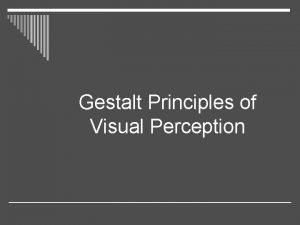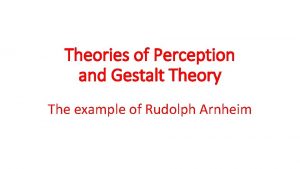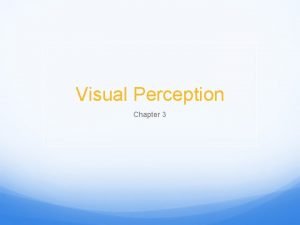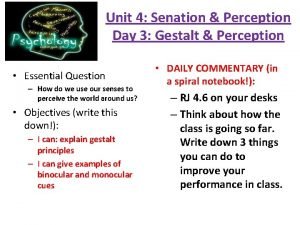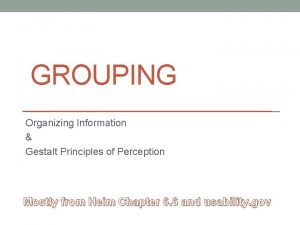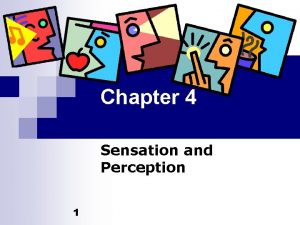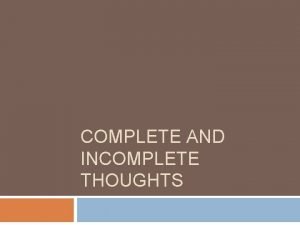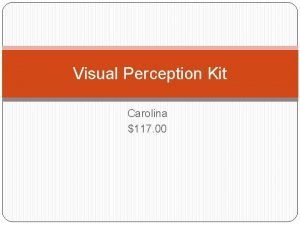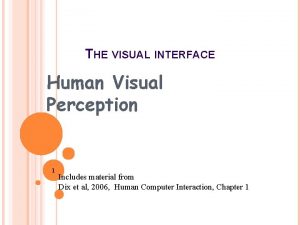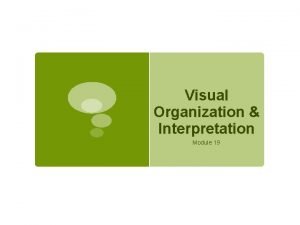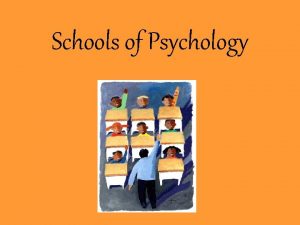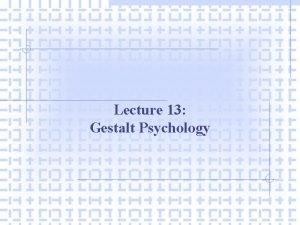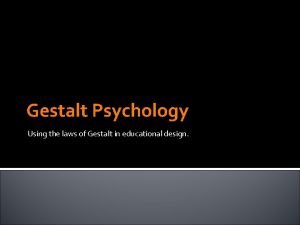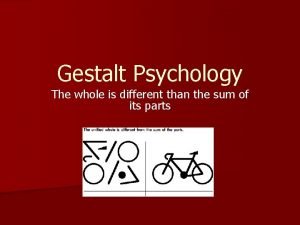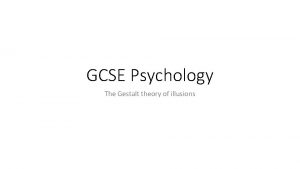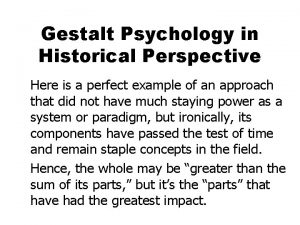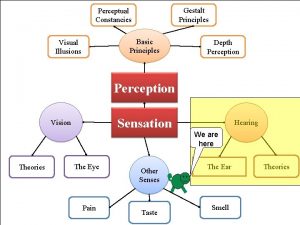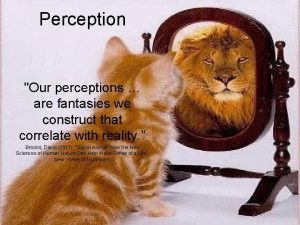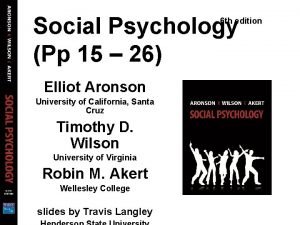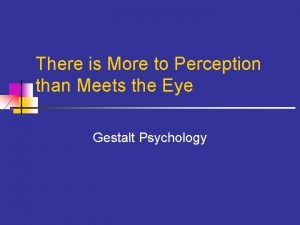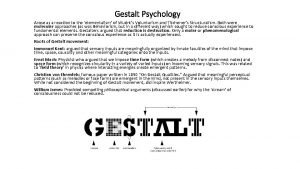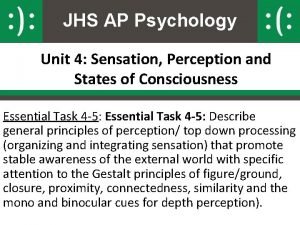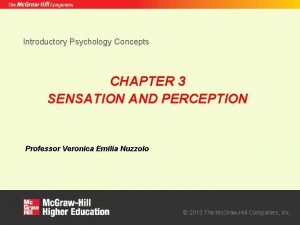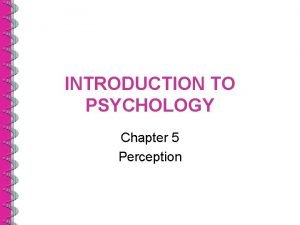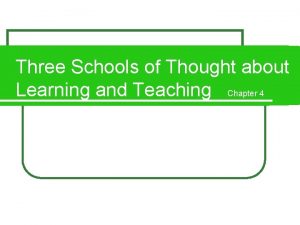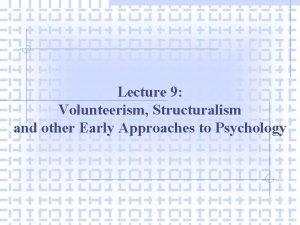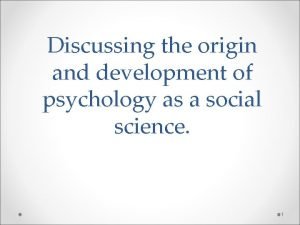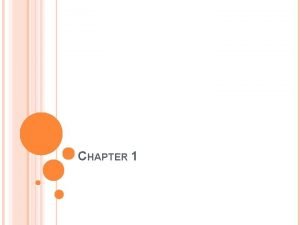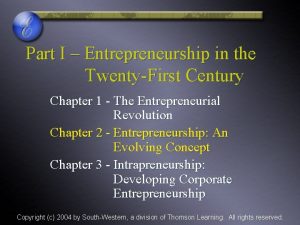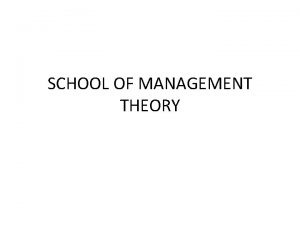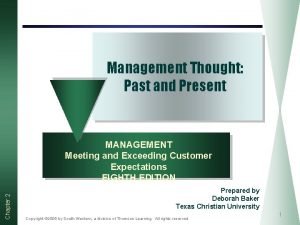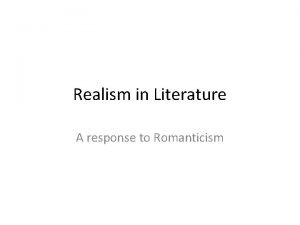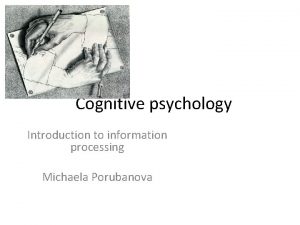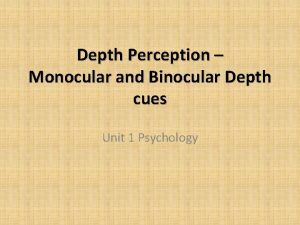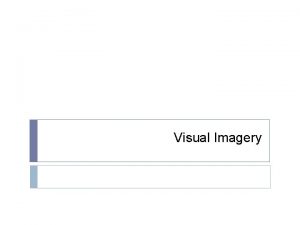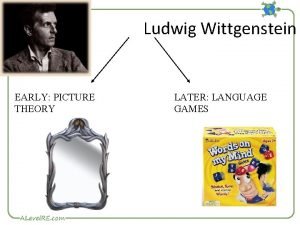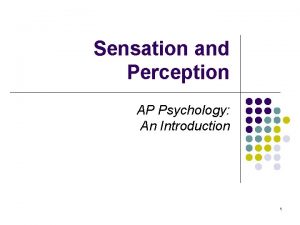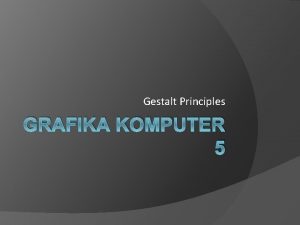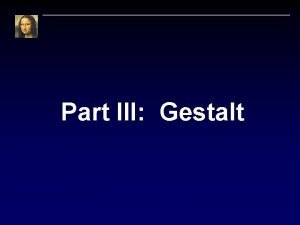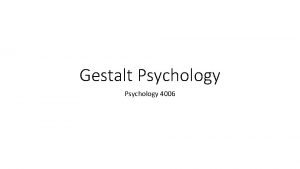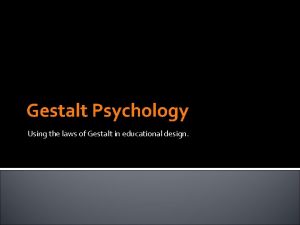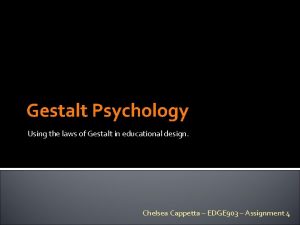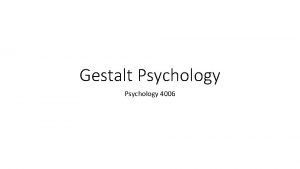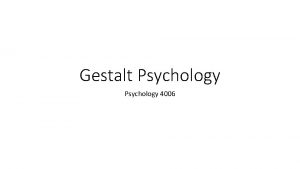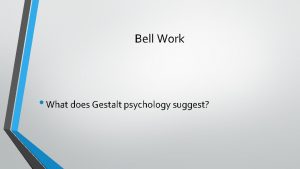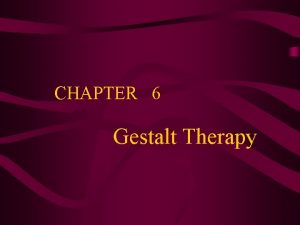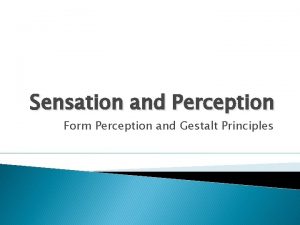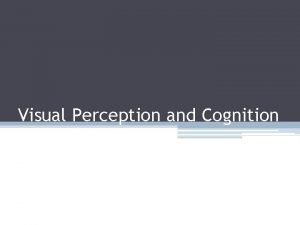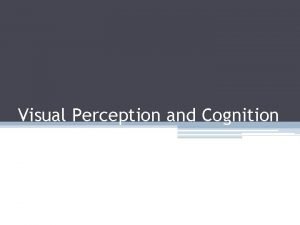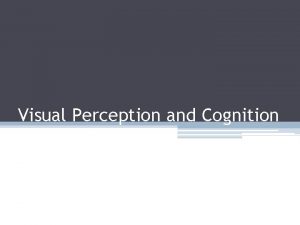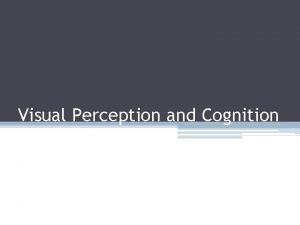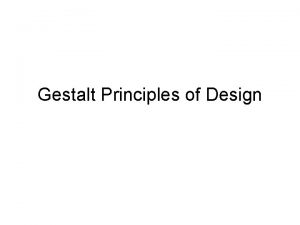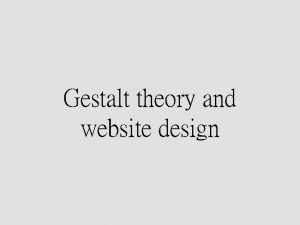VISUAL PERCEPTION GESTALT PSYCHOLOGY v School of thought












































- Slides: 44

VISUAL PERCEPTION

GESTALT PSYCHOLOGY v. School of thought interested in how people naturally organize their perceptions according to certain patterns. v. Emphasizes that the whole is greater than the sum of its parts. v. Max Wertheimer

GESTALT PRINCIPLES v. Used to explain how we perceive objects. v. Figure-ground v. Proximity v. Closure v. Similarity v. Simplicity v. Continuity

FIGURE AND GROUND


PROXIMITY

CLOSURE

SIMILARITY

SIMPLICITY

CONTINUITY

VISUAL PERCEPTION v. Shape v. Depth v. Motion v. Constancy

SHAPE PERCEPTION v. The ability to perceive the form of an object. Ø Outlines and contours

DEPTH PERCEPTION v. The ability to perceive objects in 3 -D. Ø Enables us to judge distances v. Binocular cues: from 2 eyes v. Monocular cues: from 1 eye

VISUAL CLIFF v. Studied by Eleanor Gibson & Richard Walk (1959) v. Suggests that human infants of crawling age have depth perception vnewborn animals also show depth perception

BINOCULAR CUES v. Depth cues that depend on the combination of the images in the left and right eyes and on the way the two eyes work together. v. You need both eyes to experience this type of depth perception • Retinal disparity: difference between the images in the two eyes. • Convergence: cues to depth and distance from the eye muscles.

MONOCULAR CUES v. Depth cues available from the image in one eye, right or left. v. You only need one eye to experience this type of depth perception v. Pictorial depth cues: clues about distance that can be given in a flat picture.

MONOCULAR CUES Familiar size- standard size Ø Relative size- larger=closer; smaller=further • Height in field/Relative height- lower=closer; higher=further • Linear perspective- parallel lines get closer as they recede • Overlap/Interposition- closer conceals further • Shading/Shadowing- light and dark create 3 -D impressions • Texture gradient- course and distinct=closer; fine and indistinct=further • Relative clarity- clear=closer; hazy=further •

FAMILIAR & RELATIVE SIZE

RELATIVE HEIGHT

LINEAR PERSPECTIVE

INTERPOSITION

SHADING

TEXTURE GRADIENT

RELATIVE CLARITY

MOTION PERCEPTION v. The ability to detect movement. • Real vs. perceived v. Apparent movement: the perception that a stationary object is moving. v. Objects traveling towards us grow in size and objects moving away from us shrink in size. • The same is true when the observer moves to or away from an object.

MOTION PERCEPTION Motion parallax/Relative motion • Phi phenomenon • Stroboscopic effect •

MOTION PARALLAX v. Images of objects at different distances are moving across the retina at different rates. • As we move, stationary objects seem to move as well • Objects that are closer appear to move faster; objects that are farther away appear to move slower • Objects above a fixation point seem to move in the same direction (with us), objects below a fixation point seem to move in the opposite direction (past us) • Depth cue • Example: Cows vs. light posts while driving on the Turnpike to Orlando

MOTION PARALLAX

PHI PHENOMENON v. A series of lights flashed in rapid succession will appear to be one moving light. • Creates an illusion of movement v. Example: Neon signs use this principle to create motion perception

PHI PHENOMENON

STROBOSCOPIC EFFECT v. A series of still pictures presented in rapid succession will appear to be moving. • Creates an illusion of movement v. Also called the strobe effect v. Example: movies and flip books

PERCEPTUAL CONSTANCY v. The recognition that objects are constant and unchanging even though sensory input about them is changing. v. We perceive objects as remaining the same, despite the images they cast on our retina. ØSize constancy: object remains the same size ØShape constancy: object remains the same shape ØColor constancy: object remains the same color

SIZE CONSTANCY

SHAPE CONSTANCY

COLOR CONSTANCY



OPTICAL ILLUSIONS v. An apparent inexplicable discrepancy between the appearance of a visual stimulus and its physical reality. v. Famous illusions: ØMuller-Lyer ØPonzo ØZollner ØHermann grid ØAmes room ØImpossible figures

MULLER-LYER ILLUSION

PONZO ILLUSION

ZOLLNER

HERMANN GRID ILLUSION

AMES ROOM

IMPOSSIBLE FIGURES
 Law of perception
Law of perception Gestalt principle of visual perception
Gestalt principle of visual perception Gestalt theory of perception examples
Gestalt theory of perception examples Sensation
Sensation Convergence gestalt
Convergence gestalt Perception gestalt principles
Perception gestalt principles Theories of hearing
Theories of hearing Incomplete thought examples
Incomplete thought examples Carolina visual perception kit
Carolina visual perception kit Two stages of vision in hci
Two stages of vision in hci Module 9 gestalt psychology
Module 9 gestalt psychology Structuralism definition psychology
Structuralism definition psychology Gestalt psychology
Gestalt psychology Gestalt aesthetics
Gestalt aesthetics Max wertheimer gestalt psychology
Max wertheimer gestalt psychology Gestalt optical illusions
Gestalt optical illusions Principle of inclusiveness gestalt
Principle of inclusiveness gestalt Gestalt théorie
Gestalt théorie Gestalt psychology
Gestalt psychology Father of social psychology
Father of social psychology Rci
Rci Gestalt effect meaning
Gestalt effect meaning Ap psychology unit 4
Ap psychology unit 4 Perception meaning in psychology
Perception meaning in psychology Categorical perception psychology
Categorical perception psychology Chapter 4 sensation and perception test
Chapter 4 sensation and perception test Sensation example
Sensation example Interposition psychology definition
Interposition psychology definition Major schools of thought in psychology
Major schools of thought in psychology What are the three school of thoughts
What are the three school of thoughts Classical school of thought
Classical school of thought Structuralism
Structuralism History and origin of science of psychology slideshare
History and origin of science of psychology slideshare School of thought in criminology
School of thought in criminology What year did edward titchener introduce structuralism
What year did edward titchener introduce structuralism Entrepreneurs are doers not thinkers
Entrepreneurs are doers not thinkers School of management theory
School of management theory Quantitative school of management thought
Quantitative school of management thought What is realism
What is realism Apakah maksud visual pada kata pemrograman visual
Apakah maksud visual pada kata pemrograman visual Michaela porubanova
Michaela porubanova Monocular cues accommodation
Monocular cues accommodation Visual imagery
Visual imagery Wittgenstein language games
Wittgenstein language games Visual capture ap psychology
Visual capture ap psychology

